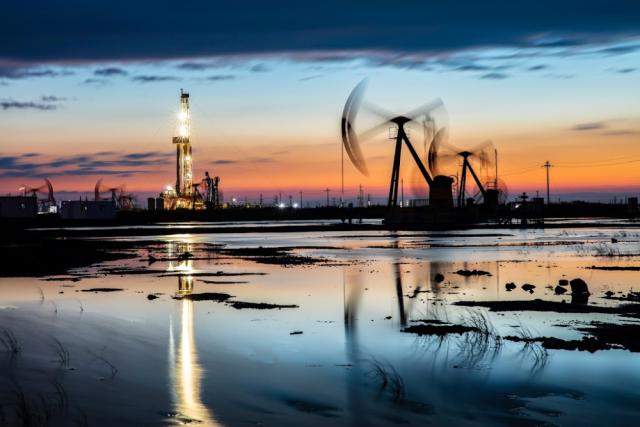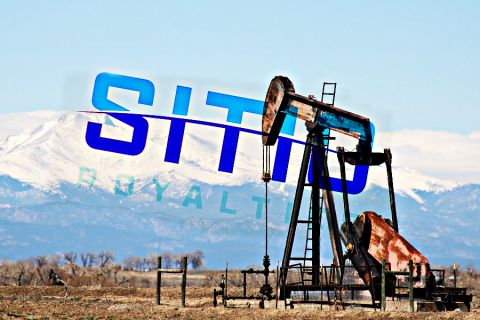
(Source: Shutterstock.com)
Flexibility, location and scale are helping some oil and gas companies weather the current storm as the global coronavirus pandemic and economic consequences continue adding uncertainty to ongoing market volatility, energy experts say.
The industry witnessed negative oil prices rebound, operators shutting in and slowly bringing back production, massive budget cuts and layoffs along with a growing wave of bankruptcies in what could be characterized as one of the most challenging second quarters in the industry’s history. What comes next remains to be seen as rising COVID-19 cases threaten to again slow down life as previously known in parts of the world, particularly in the U.S.
With WTI crude futures just below $40/bbl early July 9, challenges remain for oil players.
“At the price point that we’re at right now, anywhere between $30 to $40 on a full-cycle basis, there’s really not very much that actually works if you take into account all of the costs that go into running assets,” Vidisha Prasad, managing director of Adya Partners, said on a Kayo Conference Series webinar July 8. Clients of the energy consulting and financial advisory firm and other companies have been focused on half-cycle point forward economics. “And they’re sweet spots in every basin.”
Depending on the stage of development, infrastructure needed and required investment, some parts of the Permian Basin, for example, are coming out winners.
“Most of the independent players in the Permian did not shut in very much, which essentially indicates that from a point forward basis, they’re making positive margins,” Prasad added, “but it shouldn’t be a surprise to anybody in the sector that $35-$40 is really not a sustainable price no matter what basin you’re in, and that certainly will have some snowball implications with certain companies.”
That’s come in the form of bankruptcies, something she said hopes will bring some supply relief and help prices rise.
RELATED LINK: Experts Offer Grim Outlook for Upstream Bankruptcies
In the Appalachian region, some operators have benefited from having diverse assets, giving them the ability to switch, for example, from oil to dry gas in the Marcellus Shale, Montage Resources Corp.’s Delvina Uka Oelkers pointed out.
“Even though the prices were low, it made a lot more economic sense, especially if the infrastructure’s already in place,” said Oelkers, adviser of operations, planning and technology for Montage. “For Appalachia, that was kind of a neat system to have in place [to] be able to make that swap fast.”
RELATED LINK: Is Gas the Good News We Need?
In Canada, there are also a few oil sands projects that can generate free cash flow around $40 though growth is “out of the question” if prices stay around that mark or even in the low $50s, said Morgan Kwan, vice president of intelligence for Enverus, which acquired RS Energy Group earlier this year.
“Some of these projects are pretty low cost to just maintain production because it’s very similar to a manufacturing plant,” she said. “Once you have built, you just have to keep it running.” There is also risk of reservoir damage with steam-assisted gravity drainage wells.
On the gas side, the Canadian story is similar to Appalachia, she added. Operators focused on condensate when gas prices were low and then shifted focus to dry gas when condensate prices slid.
“They have that flexibility,” Kwan said.
Scale also matters, putting larger companies with larger balance sheets at an advantage, according to Prasad. “The ability to weather deeper storms was always valuable, but it’s become even more valuable,” she said, comparing valuations of majors like Exxon Mobil Corp. and independents like Pioneer Natural Resources Co. to smaller companies. “There needs to be more and more consolidation.”
However, the challenge she sees is that most of the consolidation needs to happen among smaller players and those on the lower end of the quality curve.
“I’m hoping that this sort of very rude second quarter is going to create a little bit more impetus for more mid-caps and small-caps to come together,” Prasad said. “I fully expect some large-cap consolidation, but there’s only a handful of large-cap buyers,” including five majors—two of which have not done a deal yet. “So, we shouldn’t be expecting too many $50 billion transactions.”
Meanwhile, companies that haven’t already done so are eagerly awaiting oil price improvement to bring back shut-in production. And rigs that are already running must be part of lean drilling programs.
“It is imperative that we’re doing leaner drilling programs, using better tools, getting the wells done efficiently, effectively and on time and on cost,” Oelkers said.
“We’re not going to have more dead time and sitting around time; that is never the goal,” she added. That is highlighted even more now.
In Canada, about 200,000 bbl of oil sands production shut-in since April has come back online. Shut-in production in the Lower 48 is also returning.
However, storage remains an issue, given demand has not risen dramatically.
“I don’t think there are a lot of economic storage solutions out there for these operators,” Kwan said. “In a sense, shutting in production—keeping the oil in the reservoir—is the best storage solution at this point. I think it will remain tight as long as demand hasn’t fully recovered.”
Though she doesn’t expect shut-ins to last much longer, Kwan doesn’t foresee a complete recovery given COVID-19 numbers.
On the supply side, OPEC+’s decision to extend production cuts helped; however, “how disciplined they are in those cuts remains to be seen,” Kwan said. “And then as U.S. producers start to bring that production back online, I think you’ll be in this constant ebb and flow fighting against storage capacity and draws on demand. So, not an optimistic outlook, at least in the near term.”
Recommended Reading
Deep Well Services, CNX Launch JV AutoSep Technologies
2024-04-25 - AutoSep Technologies, a joint venture between Deep Well Services and CNX Resources, will provide automated conventional flowback operations to the oil and gas industry.
EQT Sees Clear Path to $5B in Potential Divestments
2024-04-24 - EQT Corp. executives said that an April deal with Equinor has been a catalyst for talks with potential buyers as the company looks to shed debt for its Equitrans Midstream acquisition.
Matador Hoards Dry Powder for Potential M&A, Adds Delaware Acreage
2024-04-24 - Delaware-focused E&P Matador Resources is growing oil production, expanding midstream capacity, keeping debt low and hunting for M&A opportunities.
TotalEnergies, Vanguard Renewables Form RNG JV in US
2024-04-24 - Total Energies and Vanguard Renewable’s equally owned joint venture initially aims to advance 10 RNG projects into construction during the next 12 months.
Sitio Royalties Dives Deeper in D-J with $150MM Acquisition
2024-02-29 - Sitio Royalties is deepening its roots in the D-J Basin with a $150 million acquisition—citing regulatory certainty over future development activity in Colorado.






